Talking ecodrought in Portland, Oregon: food trucks, beer and the Benson Hotel
Bill Dennison ·Brianne Walsh, Simon Costanzo and I traveled to Portland, Oregon to talk about climate change with the USGS Northwest Climate Science Center. This workshop was the sixth in our series of eight workshops we are conducting across the entire United States. The one difference with this regional workshop is that we are breaking it up into two workshops, one in Portland to talk about the issues associated with the wetter, western portions of the region and one in Boise, Idaho to talk about the issues associated with the drier, eastern portions of the region. The Northwest region includes all of Oregon, Washington and Idaho and the portion of Montana that is west of the Rocky Mountains.
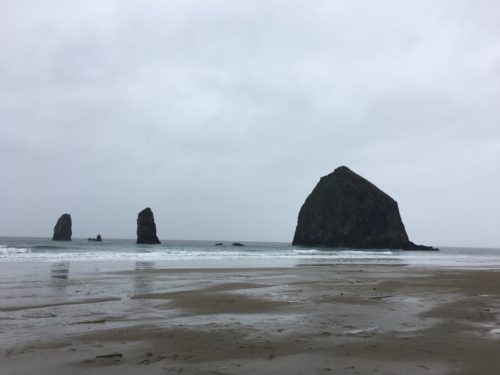
The biggest lesson I gained from our workshop was the incredible diversity of landscapes across the region. We had great introductory talks by Kathie Dello, Chas Jones, Jessica Halofsky, and Jason Dunham. My simplistic image of the Pacific Northwest was that of rainy weather, giant verdant temperate forests with ferns and mosses, beautiful rocky shores with tide pools, and vibrant cities with tech-savvy young people who drank a lot of coffee and beer. What I quickly learned was that this image is reasonably accurate, but it is only accurate for coastal Oregon and Washington, and for the urban development along Puget Sound and the Willamette Valley. There are a series of mountain ranges scattered through the region (e.g., Coastal range, Cascades, Bitterroots, Blues) which serve to restrict the maritime moisture from penetrating inland, so there are very arid regions in eastern Oregon and Washington, Idaho and western Montana. In addition, the rural towns and cities in this arid region are not the hipster havens of Puget Sound and Willamette Valley.
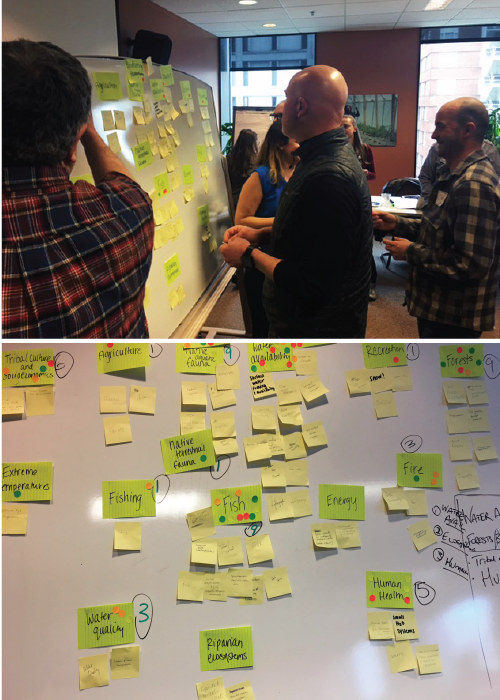
The landscape is dominated by the large Columbia River network, which includes major tributaries like the Willamette and Snake Rivers. The Pacific Northwest rivers have many dams that are used to generate hydroelectric power. The complex topography of mountain ranges, river valleys, steppes and plains interact with weather patterns that include seasonal monsoonal fronts that come from the south and seasonal maritime fronts that come from the Pacific Ocean to produce highly variable local climates. These local climates affected our trip, as we planned to drive from Portland to Boise in between workshops, but the steady drizzle of rain in Portland turned to snow and ice in the mountain passes, making the highway drinking hazardous. We opted to fly instead.
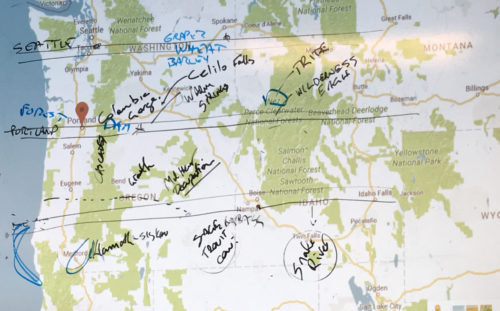
While in Portland, we were able to partake of the incredible diversity of food trucks that had good, cheap food. The food trucks were not the wheeled variety with generators like in Washington, D.C., but were sitting on the ground with power outlets. There were trucks with Thai, Mexican, Indian, Greek, Ethiopian, Italian, Polish, Vietnamese, Turkish, and American cuisine. We ducked out of the workshop for lunch and the challenge was deciding which of the great options to choose from. After the workshop, we sampled some of the famous Portland beer. It was a great way to wash down smoked salmon.
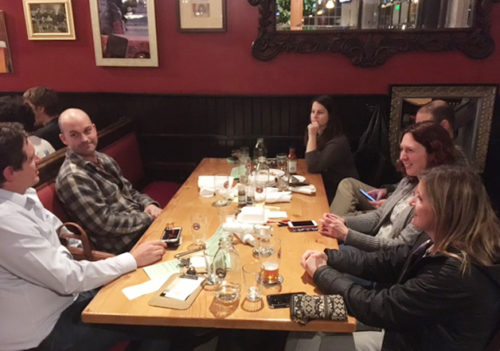
We stayed at the Benson Hotel, built in 1913. The stunning hotel lobby had Italian marble floors, soaring ceilings and polished wood walls, banisters and pillars. I can see why every U.S. President since Taft have stayed in the Benson. The cozy fireplace was a nice welcome from the cold, damp streets of Portland. The other feature of Portland that I enjoy is Powell's Books. I always stop in for a peruse and never walk out empty-handed because they have an eclectic collection of new and used books.
As part of our workshop, I learned of Kelly Redmond, a recently deceased, highly respected climatologist who had a huge impact on the understanding of climate features of western United States. Several people mentioned Kelly, and one of the speakers included his quote "We've talked of this whole thing of Eskimos having 31 names for snow. If you live in dry climate, you probably have 31 names for drought. When you are constantly faced with something, each instance matters." This inspired me to adapt Paul Simon's song "Fifty Ways to Leave Your Lover". I wrote "Thirty One Ways to Lose Your Water" as a tribute to Kelly Redmond. The people mentioned in this song include Nicole DeCrappeo, Deputy Director of the NW Climate Science Center, Joe Ebersole (EPA), Chas Jones (EPA), Jason Dunham (USGS), and Gus Bisbal, Director of the NW Climate Center.
Thirty One Ways to Lose Your Water
7 February 2017
A tribute to Kelly Redmond
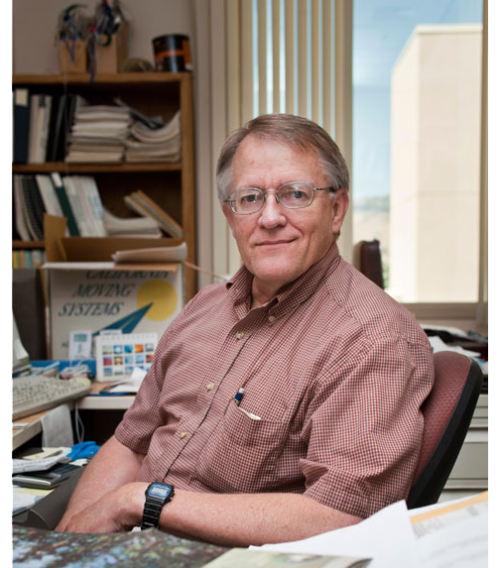
Nicole said it's really not my habit
To intrude
Furthermore, I hope my meaning
Won't be lost or misconstrued
But I'll repeat myself
At the risk of being crude
There must be 31 ways
To lose your water
31 ways to lose your water.
[CHORUS:]
You just ratchet down the flow, Joe
You do that hydrology jazz, Chas
It depends on location, Jason
Just get yourself water
Hop on the bus, Gus
You don't need to discuss much
Just get on a roll, Nicole
And get yourself water.
Nicole said it grieves me so
To see IAN in such pain
I wish there was something I could do
To make you smile again
I said I appreciate that
And would you please explain
About the 31 ways.
Nicole said why don't we all
Just sleep on it tonight
And I believe in the morning
We'll begin to see the light
And then she showed me
With all these experts, she probably was right
There must be 31 ways
To lose your water.
31 ways to lose your water.
[CHORUS]
You just ratchet down dam flow, Joe
You do that hydrology jazz, Chas
It depends on location, Jason
Just get yourself water
Hop on the bus, Gus
You don't need to discuss much
Just get on a roll, Nicole
And get yourself water.
About the author
Bill Dennison

Dr. Bill Dennison is a Professor of Marine Science and Vice President for Science Application at the University of Maryland Center for Environmental Science.

